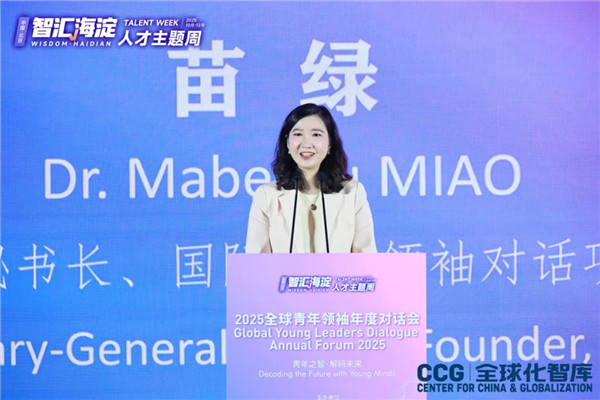Harvey Dzodin: Start of a new epoch in China’s development
November 12 , 2021By Harvey Dzodin,a senior research fellow at the Center for China and Globalization(CCG).
In recent days, the eyes of the world have been focused on two high-level meetings held about 8,000 kilometers from each other, in Beijing and Glasgow. Although the focus of the two meetings is different, their outcomes, in large measure, will determine the fates of billions of people in this century and beyond.
The communiqué issued by the Sixth Plenary Session of the 19th Central Committee of the Communist Party of China, held from Monday to Thursday, reviews the long arc of China’s fabled and recent history. Building on these experiences, the communiqué charts an ever upward future trajectory of serving the people.
Perusing the communiqué with some trepidation, because of the erroneous reports in some Western media outlets, I expected it to be a long-winding, self-serving rehash and airbrushing of recent Chinese history. It is nothing of the sort. Instead, it is rather a sober, well thought out deep dive into China’s future, based on the firm foundation laid by the CPC over the past 100 years and the successive guidance of its leaders and cadres since the founding of New China in 1949 using China’s unique model of people-centric whole process democracy with its mechanism for robust feedback from its many stakeholders.
The communiqué is the CPC Central Committee’s reaffirmation of the Party’s leadership that puts the people first, advances theoretical innovation, maintains its independence, follows the Chinese path while maintaining a global vision, breaks new ground, stands up for the nation, and promotes a united front while remaining committed to self-reform.
In a very real sense, the communiqué, along with the process that went into drafting it, complements China’s highly developed and successful five-year plans. The plans, along with other CPC Central Committee resolutions issued in the past, have worked in tandem to set targets and achieve the goals which have made China the second-largest economy in the world in a few decades.
In 1953, when the first five-year plan was launched, China’s population was more than 583 million and its per capita GDP $54. Today, thanks to the leadership of the Party, China, despite having a population of 1.4 billion, has per capita GDP of $10,500, according to World Bank data.
In the 40-odd years since the launch of reform and opening-up, the Party, because of its strong leadership and people-centric policies, has lifted more than 750 million out of poverty. Equally important, life expectancy in China has surpassed that in the United States. China also has a higher literacy rate.
No wonder in public opinion polls, the Chinese people rate their government much higher than the US citizens do theirs. Surprisingly, the Chinese people’s satisfaction level with their government increased in the worst days of the COVID-19 pandemic.
Thanks to the Party’s leadership, China realized its first centenary goal of building a moderately prosperous society in all respects at the end of last year and, in the process, also eradicated absolute poverty in the country. Now, the Party is working toward achieving the second centenary goal of developing China into a great modern socialist country that is prosperous, strong, democratic, culturally advanced, harmonious and beautiful.
As the principal contradiction has evolved from one between the ever-growing material and cultural needs of the people and backward social production to that between unbalanced and inadequate development and the people’s ever-growing needs for a better life, the Party has replaced quantitative GDP growth with qualitative improvement of life.
And since the needs to be met for the people to live a better life are increasingly broad — not only have their material and cultural needs grown but also their demands for democracy, rule of law, fairness and justice, security, and a better environment are increasing — China’s policies will be formulated to address the contradictions in the new era, replacing quantitative growth with qualitative development.
What a stark contrast to the US, which has no such tools. The closest to such tools in the US are the political platforms the two political parties release before presidential elections. The Democrats and Republicans cobble these “tools” together as marketing materials and quickly discard them the day after the election.
The situation in the United Kingdom is no better. Think about how incumbent British Prime Minister Boris Johnson decided whether or not to back Brexit. He wrote two opposite policy drafts and decided on one only after measuring the political winds to determine which direction benefitted him more.
In the same chaotic atmosphere, scientists, environmental activists and global leaders and stakeholders at the UN Climate Change Conference, the other important meeting, in Glasgow, Scotland, have come to recognize that some degree of environmental damage cannot be reversed. And as the young Swedish environmental activist Greta Thunberg and her peers have realized, the meeting is mostly “blah, blah, blah”.
The climate conference was scheduled to conclude on Friday, but like many others in the past it is likely to continue on Saturday, even Sunday, in the hope that the global leaders will agree to a binding deal to stop the world from hurtling toward climate disaster.
The only hopeful note was the surprise announcement that China and the US will work together to combat climate change. Which is an echo of the new model of major country relations proposed by President Xi Jinping. Let’s hope these major powers work together to avert an environmental catastrophe.
From China Daily, 2021-11-12
Topical News See more






